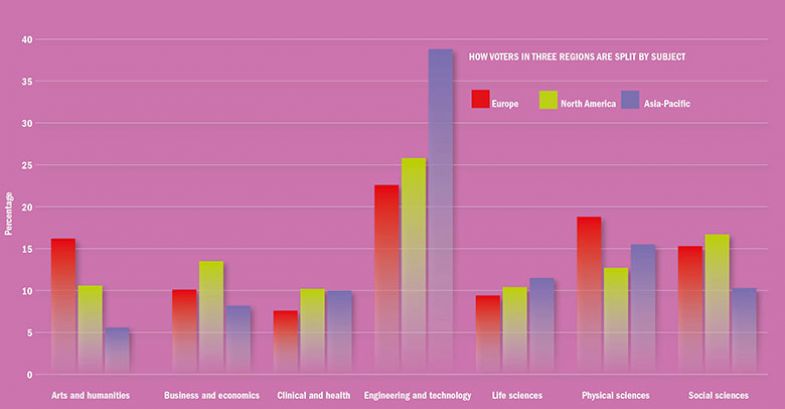Browse the full Times Higher Education World Reputation Rankings 2019 results
Australia is one of the stand-out performers in the latest edition of the Times Higher Education World Reputation Rankings, doubling its representation compared with last year. And these charts outline how some of the country’s best-known institutions are now gaining recognition across a broad range of subjects.
The “radar” graphs (below) show for each Australian university the share of its votes in the Reputation Rankings that come from six subject areas, in 2015 and in 2019.
Strong points: Vote breakdown by subject for Australia’s universities
For most of Australia’s top universities, an increasing proportion of the votes in the ranking are coming from academics in business and economics and engineering and technology. Social sciences also seem to be rising in stature relative to other fields at the Australian National University and the universities of Sydney and Queensland.
However, the growing share of reputation votes in certain subjects appears to be at the expense of the arts and humanities proportion for some of the universities.
Meanwhile, the bar graphs on subject area and world region show how the scholars voting in each area of the globe are split among different fields.
How voters in three regions are split by subject
In the Asia-Pacific, for instance, almost 40 per cent work in engineering and technology areas – far higher than the share in North America and Europe – and the arts, humanities and social sciences form a relatively small proportion of those voting.
Those casting votes in Europe are more likely to be working in the arts and humanities than their peers in the other regions, while the social sciences form a similar share of voters in Europe and North America.
Life sciences and clinical subjects have relatively similar shares in all three regions, while the physical sciences are more likely to be the discipline for voters in Europe compared with the Asia-Pacific and North America.
Register to continue
Why register?
- Registration is free and only takes a moment
- Once registered, you can read 3 articles a month
- Sign up for our newsletter
Subscribe
Or subscribe for unlimited access to:
- Unlimited access to news, views, insights & reviews
- Digital editions
- Digital access to THE’s university and college rankings analysis
Already registered or a current subscriber?









